Men's magazines III
This is the third part of an article on four pages about men's magazines and some top-shelf titles:Men's magazines I:
- Early evolution
- The accepted wisdom
- Exploring the gap
Men's magazines II :
- Loaded defines the lads' mag
- The rise of FHM
- Table: Men's magazines by mid-1996
Men's magazines III:
Men's magazines IV: advent of the weeklies:
- IPC and Emap gear up
- Nuts – 'the world's first men's weekly'
- Emap follows with Zoo Weekly
- Building a new market -Cut and KO!
- Table: Men's magazines: details and sales
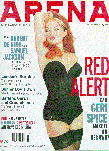 Arena sporting a former Spice Girl
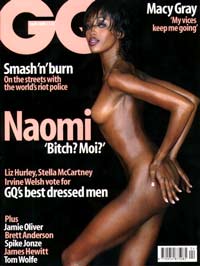 GQ makes the most of Naomi Campbell |
The advent of womenThe women's magazine Cosmopolitan had established the selling power of articles about sex and married this to regular 'centrefolds'. These were so successful that a pin-up magazine was launched by Portland in 1992, For Women, covering 'What they don't show you in Cosmo' and describing itself as 'the magazine for the sensual woman'. Bite magazine from the sex shop and party group Ann Summers followed the next year. Bite did not last long but For Women – 'Raunchy, sexy magazine for women' – is still published (Fantasy).Yet the new men's magazines were reluctant to tar themselves with the same brush as 'top shelf' magazines, from companies such as Northern & Shell. So women were slow to creep on to the covers of the lads' titles. Despite the racy image they now have, in some cases making it difficult to see the difference between men's lifestyle and top-shelf publications, only one of the mainstream titles had a woman on the front cover when it launched: Esquire used a 30-year-old photograph of French actress Brigette Bardot. A couple of photographs of up-and-coming actress Elizabeth Hurley, an article on hotel sex and a competition to win a dirty weekend in Brighton's Grand Hotel (scene of the IRA's bomb attack on Margaret Thatcher's Conservative party a decade earlier) were as far as the first issue of Loaded went. However, under its third editor, American Michael VerMeulen, GQ, by now fighting with Arena to be the 'male fashion bible', found excuses to smuggle women on to its covers: February 1993 saw French actress Juliette Binoche in a clinch with Jeremy Irons, both stars of the film Damage. 'Sex, love and obsession' was the cover line. Then, January 1994 saw the results of a reader survey used as the excuse for a bikini-clad woman on the cover. By 1996, the lads' mags were running so far away in terms of sales that the 1996 media pack for GQ doesn't even mention them and compares itself only with Arena, Maxim and Esquire. Arena quoted a 'sex index' from the Independent newspaper on the previous November of the number of pictures of women half dressed or less: Arena had just nine, compared with 23 for GQ and 34 for Maxim. 'Sometimes it pays to have smaller figures' was its conclusion. The men's lifestyle market grew by almost half from Jul-Dec 1995 to Jul-Dec 1996. In that time, Loaded's sales grew by over 85%. Yet even this was not enough to outshine FHM: its sales more than doubled to 365,341. It was now rivalling the best-selling women's monthlies. By the end of 1999, FHM was selling 775,000 copies in the UK, and had been launched in five countries. |
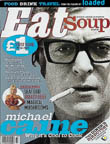 Eat Soup: Loaded spin-off
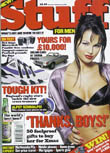 Stuff: sold by Dennis to Haymarket in UK 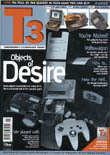 T3: technology from Future 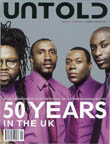 Untold: black style 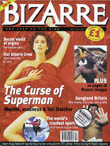 Bizarre: full of weird pictures 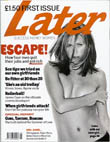 Later: IPC's launch for older readers 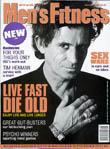 Men's Fitness: US licence by Mollin 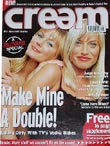 Cream from Bizarre publisher John Brown 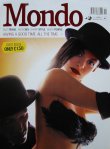 Mondo: Cabal tried to tempt older men 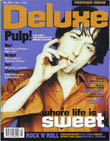 Deluxe: tried to leave women off the cover 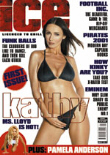
Ice: high on the flesh factor 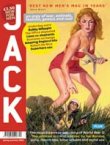 Jack: more brains
than bodies
Jack: more brains
than bodies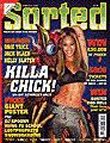 Sorted first issue cover for teens 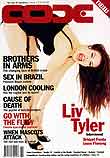 Code appeared at the end of 2001 with Liv Tyler on the cover 'for men of substance' |
A maturing marketThe men's lifestyle magazine market, though not mature in terms of sales, was splitting into two sub-sectors: the mass-market titles FHM and Loaded, both with a median age of 23, and more upmarket titles with older readerships (Arena, GQ, Maxim and Esquire, with median ages of 24, 25, 25 and 26). In addition there were niches, based around health, fashion and sport. Several titles launched spin-offs, particularly on fashion. Loaded even took its attitude too far with the short-lived Eat Soup (Oct 96), a food title.
Viz and Fortean Times publisher
John Brown came up with Bizarre (Mar/Apr 96). The big feature of this was a 10-page section of bizarre images and news. Most launches at this stage were in niche areas. By the end of 1999, the "big three" FHM, Loaded and Maxim, accounted for about three-quarters of the market by sales value. Then there were six titles, GQ, Front, Bizarre, Esquire, Later and Arena, mopping up most of the rest, leaving a dozen or so titles to fight over about 1% of the market. The short-lived publishing group Mollin had a strategy of licensing magazines from the US. It sought a slice of the Men's Health market with Men's Fitness in July 1996. This had a then-fashionable monochrome cover with a flourescent orange ink for the masthead. Its tagline reflected the attitude of the time: ‘Get fit or feel s**t.’ Mollin folded and the title was taken over by Dennis, though it has remained a long way behind the market leader. The big publishers tried to break into the health sub-segment, mainly with spin-offs: GQ Active, ZM (Aut/Win 98, Paul Colbert, from National Magazines, whose Cosmo health and beauty spin-off Zest was launched in Autumn 1994), FHM Bionic and ESQ (Esquire Sports Quarterly) and US import Men's Journal (Wenner Media). These met with limited success against Men's Health.Among those that came and went quickly were Level (April 1999, 4130 Publishing, under Chris Quigley); two US imports Gear and Bikini. John Brown Publishing, then owners of Viz and Bizarre came up with the short-lived Cream ('For men with bottle' – winter 1998); like Bizarre but with more 'babes'. It carried a 16-page sealed section. Cabal followed IPC in tackling the "post-Loaded generation" with Mondo, though like Later, this folded in 2001. In the same year, Ice appeared from its eponymous publisher. Its covers were indistinguishable from top-shelf titles. Gadgets, a mainstay for the monthlies and supplements, also sparked launches, some with women draped over them. These included T3 (Future, Nov 96), Stuff (Dennis, bi-monthly, Dec96) and Boys Toys (Freestyle, bi-monthly Mar 99). For men who saw themselves as even more upmarket of Arena, Wallpaper appeared in London, from Tyler Brule (Sep/Oct 96). Its Canadian founder sold it to Time Inc in June 97. Time backed Brule in another launch in 2000. This was Line, a sports gear fashion magazine. It was notable for having two covers, one showing a man, the other a woman. However, it did not last long. He left after Wallpaper was put under the control of IPC, which AOL-Time Warner had bought in 2001, to concentrate on his consultancy, Wink Media, and freelance writing, including a column in the Saturday Financial Times.The "big three" saw a more upmarket fashion niche as well, launching Arena Homme Plus, FHM Collections and Loaded Fashion. These met with limited success. However, a backlash was starting against the flesh-driven nature of FHM and Loaded. Nick Logan's Wagadon was first to react with Deluxe (May 1998). Editor Andrew Harrison introduced the concept: "Deluxe is here because a group of people got tired of being told that the same clapped-out subjects were the be-all and end-all of men's interests. They got bored of pro-celebrity shark-fishing and Z-list actresses in their knickers. The world is more interesting, and more complicated, than all that..." Music was a mainstay of the title and Pulp's Jarvis Cocker was on the first cover. Unfortunately, the new mix did not work. Despite a redesign (including a move from stapled to a more upmarket perfect-bound cover) and a bigger "babe factor" the magazine failed to work up towards a 150,000 sales target. It closed at issue 8 (jan/Feb 1999) with sales of less than 80,000. The main cover lines were: "She wants you sex: your girlfriend's filthy fantasies" and "Mine's a vodka and Red Bull. Davina Murphy will see you now..." with the semiclad Hollyoaks actress on the cover. Even worse, the failure of this and its women's magazine Frank was to drain Wagadon, which sold out to Emap six months later. And March 1999 saw a line drawn in the sand, at Conde Nast's GQ. Editor James Brown (ex-Loaded) was sacked after 18 months, despite a 12% rise in sales, supposedly for featuring Rommel in a piece on stylish men. The cover theme was "Sex and Violence: Special issue on men's twin obsessions with 24 pages of erotica". The model Caprice was photographed for the cover with airbrushed nipple and wearing nothing but slingbacks and diamond-encrusted handcuffs. The Guardian quoted a Conde Nast source: "We wanted GQ to be a mixture of good writing with a bit of sex... Unfortunately, we had a little too much of the latter and not enough of the former. It was too downmarket; this was the final straw." Managing director Nicholas Coleridge said: "James brought energy and humour to the editorial mix. Unfortunately philosophical differences have arisen. During his period of enforced rest, Brown became increasingly critical of men's titles. He accused them of being formulaic, lacking intelligence and too reliant on pin-ups. At about the same time as Brown was being shown the door, Ego took up the challenge as a serious men's magazine (Portfolio, with Marie Sim'one as editor). "Ego has landed at WHS" read its advertising campaign; unfortunately, it wasn't able to stay long. However, a model had landed and stayed the course: Untold. This bi-monthly was aimed at black men (Jun/Jul 98). Editor Peter Akinti persuaded government minister Paul Boateng, comedian Lenny Henry, athlete Linford Christie and designer Ozwald Boateng to model for the first issue cover. As the memory of the millennium celebrations faded, so pressures began to mount on the sector. Early 2001 saw Mondo and Later close. The short-lived Code appeared in November from Surcutus, a publisher in Cornwall. Cover-mounts and marketing had become increasingly competitive, particularly between FHM and Loaded. Sales growth was slowing, and was to turn down. The publishers responded by bribing readers to keep sales up and maintain their advertising revenues. “If you haven’t got a cover-mount you are invisible,” said one editor. Publishers also expressed concern at the selling of magazines in bulk at cut rates, which were used increasingly to inflate ABC sales figures.The press reported a source close to Cabal as criticising the company for launching Mondo with a print run in excess of 200,000 but without enough promotion. “It should have been launched on a small, cult level where they just let people discover it,” he said. The older, supposedly more sophisticated readers seemed to be disappearing. This was hitting Esquire in particular, which saw its circulation fall 39 per cent to about 61,000. The title had tried to maintain a male-only cover policy and had a running battle in the press with rival GQ over which title was lowering the tone of the market. After bemoaning the state of the men's market, James Brown set up his own company, I Feel Good and launched film magazine Hot Dog. Then, in 2002, he put his reputation on the line in launching a men's quarterly, Jack. It took the A5 ‘handbag’ format popularised by the launch of women's glossy Glamour. It described itself as ‘an orgy of war, animals, fashion, genius and cool’ and ‘another great British men’s mag with lions instead of lager.’ However, it failed to achieve substantial sales and, with an ABC of about 33,000 copies, IFG was taken over by Dennis in autumn 2003. Jack was relaunched for its November issue in a larger, sub-A4, format (176mm wide by 255mm – 8mm wider and 29mm taller). However, this did not work either and Jack closed innAugust 2004, selling fewer than 40,00 copies. Later in the year, Nine was launched for black men. This was "committed to producing an innovative, contentious and provocative publication". "We are about wine, women and song," bringing "some of the hottest black women Britain has to offer". Another attempt at a more cerebral brand, though one that took the theme of a pub at its core, was bimonthly Snug (Nov 2002, Licensed Publishing). The catchline "A haven for drinkers and thinkers" called readers to this title, which the editor described as "a magazine from a pub". Its menu of sport, politics, religion, health, fashion and travel was a refreshing change from the bimbo-infested launches. Jarvis Cocker was the cover interviewee. However, it lacked the professional backing to succeed.Word, a music title for the sort of people who read sleeve notes on records, hit the streets in early 2003. It oozed professionalism. Its publishers, Development Hell, included ex-Emap executives David Hepworth, Jerry Perkins, Mark Ellen and Andrew Harrison. Nick Cave was on the cover and inside was an interview with Maxim publisher Felix Dennis. Towards the end of the year, Sour Mash arrived from a new publisher, Mash Communications, which was formed by former IPC executives. How well its blend of Viz, Heat and Loaded would work, only 2004 would tell. Then in 2004, Sorted was launched aiming at teenage boys. It only lasted a few issues.> As the table below shows, however, sales over the sector were spread among a range of titles, the Audit Bureau of Circulations listing 16 titles in the men's sector. FHM had retrenched, but was way ahead of the rest. The fate of three, The Face, Arena and Esquire must hang in the balance. The first two had begun to wilt under the FHM and Loaded onslaught while at Wagadon and have continued to slide under Emap. |
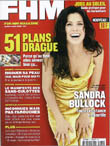
FHM: 51 ways to pull for the French |
Taking over the worldDespite the success of Loaded, IPC lacked the ambition to launch it overseas. It was undoubtedly distracted by corporate restructuring and the need to cut investment to boost short-term profits. In January 1998 Cinven, a venture capital firm, bought IPC from Reed Elsevier plc for £860 million. In July 2001, Time Inc bought IPC from Cinven for £1.15 billion.So, Dennis Publishing, under founder Felix Dennis who was never slow to spot a trend, took Maxim to the US in 1997. Just like the UK industry before the launch of Loaded, American publishers were sniffy about the concept of the lads' mag. Sean Elder on the Salon website quoted Art Cooper, editor of GQ: "[Maxim] is aimed at losers... Their advertising is beer, underwear and condoms. I always wonder why there is so much condom advertising because their readers are all masturbators." The success of the British titles inspired publishers around Europe and the rest of the world. Maxim and FHM were widely licensed. Munich-based German group Verlagsgruppe Jurg Marquard launched CKM in Poland. The name comes, just like Maxim, from a type of machine gun, suiting the macho, laddish image. By September 1999, FHM was the top men's title in the UK, Singapore, Australia, Malaysia and Turkey, and was about to appear in France. And in February 2000, Ed Needham launched the US edition, out of what was then Emap Petersen Inc. Maxim had previously raised its "ratebase" (the guaranteed circulation on which its advertising rates were based) to 950,000, despite having lost editor in chief Mark Golin to rival Details – its response had been to hire former FHM editor Mike Soutar (though he was to return to the UK within a year to run IPC's men's stable, including Loaded and Wallpaper). In comparison, GQ and Esquire each promised just 650,000 sales and Details 475,000.The detractors were soon scraping egg from their faces as Maxim went on to trounce all the established titles, more than tripling GQ's sales by 2003. In April 2004, Maxim launched two Chinese editions (in Mandarin and Cantonese) – its 22nd and 23rd international editions. In all, it claimed a readership of 17 million and sales of nearly four million copies a month The Chinese editions are published jointly with the South China Morning Post. Dennis used the Maxim brand in the US to spin off Maxim Fashion, and Maxim's "younger brother" Stuff (although the company had sold the UK original to Haymarket). It also used the brand on its music magazine Blender in 2002. |
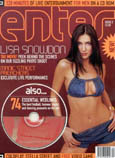
Enter CD-Rom: second issue |
Into the digital worldTechnology has long been an attraction for men and publishers have exploited it. Dennis had its first big success with a computer magazine, Computer Shopper, so it had the skills to try Blender, an interactive music magazine on CD-Rom (1995). IPC tackled the same ground with UnZip, based on content from New Scientist, NME and Vox. Neither of these lasted long, but it meant Maxim had the expertise to mount a CD-Rom on its cover in August 1995, its fourth issue, under editor Gill Hudson. Several other titles used CD-Roms or videos as cover mounts. Around the same time, US Penthouse got in on the act with Penthouse Virtual Photo Shoot – at £81! Northern & Shell, publisher of the UK version of Penthouse, followed with Digital Dreams, a CD-Rom/magazine combination, though the content was as cheap as the price at £5.95.By this time, the Tim Berners-Lee's World-Wide Web was booming. IPC's Loaded was early in with UpLoaded.com (though this closed when IPC went cold on its ambitious web strategy). Escape (1995) and X-Net (1997) as noted above, tried to exploit the pornographic side of the web, the latter with a CD-Rom also. Enter from Pure Communications in 2000 was the last attempt at an interactive CD-Rom magazine. Under editor Sam Delaney (who had worked on Later), it featured "Britain's sexiest women... cavorting", including actress Amanda Holden. Men's mags have continued to use CDs and DVDs as cover-mounts. Dennis used the success of its Maxim website to exploit the new picture messaging technology in 2003. Similarly, Emap set up the FHM Pub, manned by models behind the bar and professional darts players, as part of a mobile marketing event programme. Playboy went on to more success on the web and through cable television. However, Bob Guccione's Penthouse failed to cope with the onslaught of pornographic websites and magazines such as FHM and Maxim. Sales – which had been as high as 5 million copies a month – fell to a tenth of that. Guccione resigned as chief executive, and General Media, the division that published the title, filed for bankruptcy in August 2003. |
|



